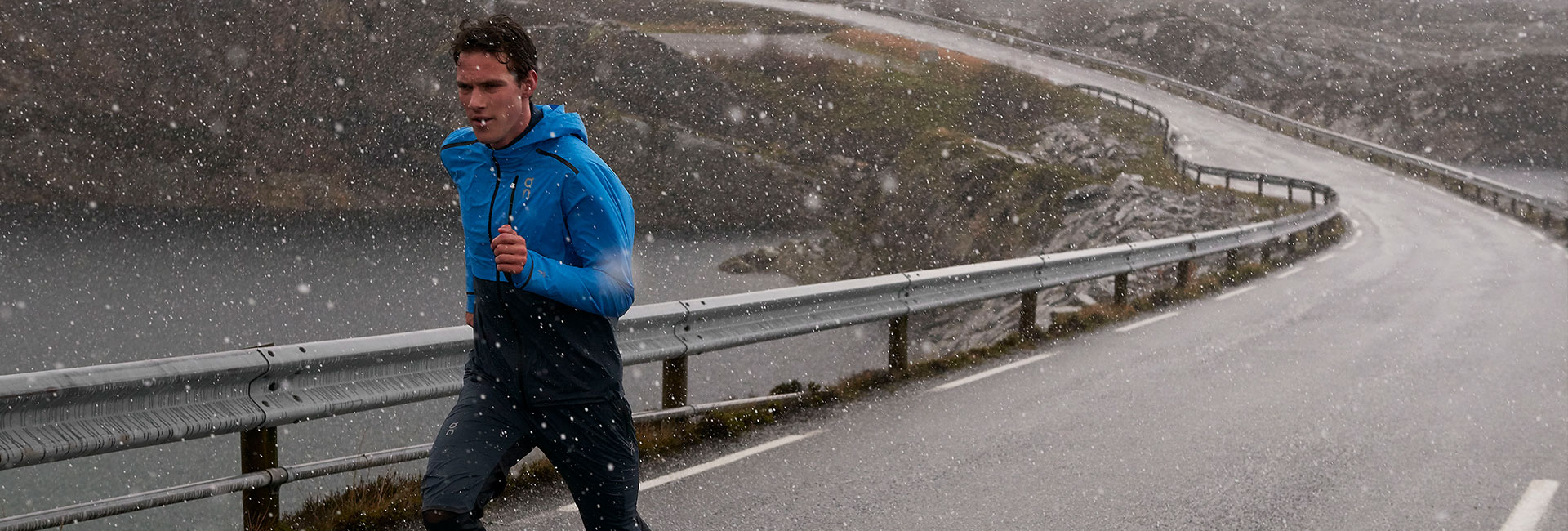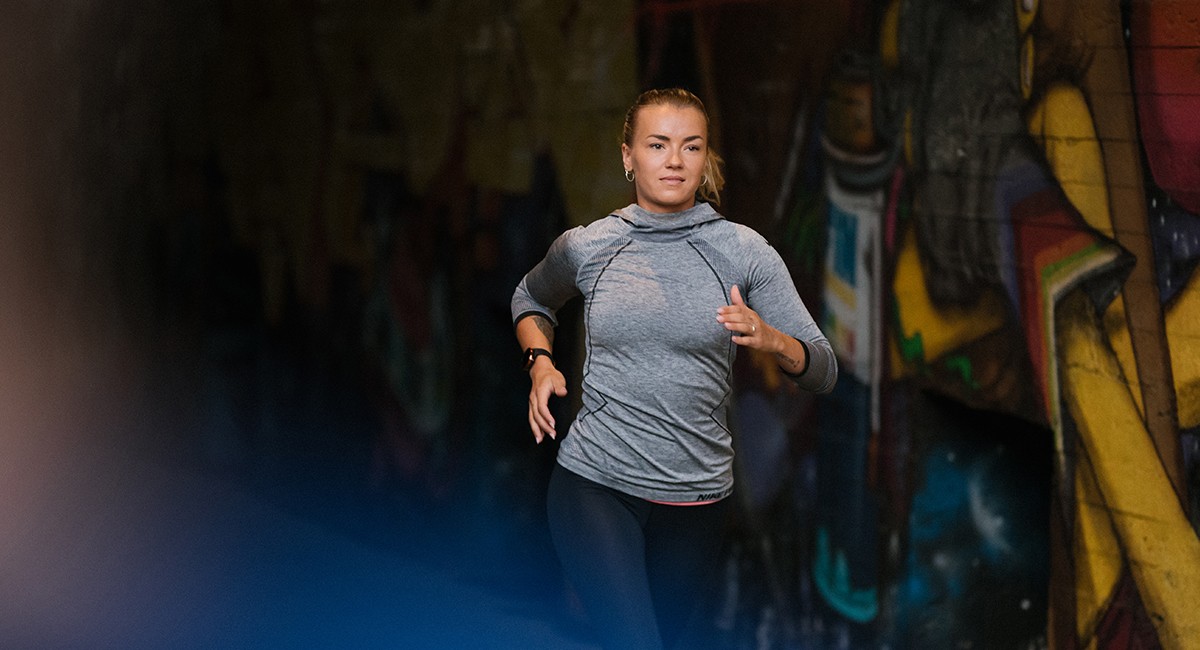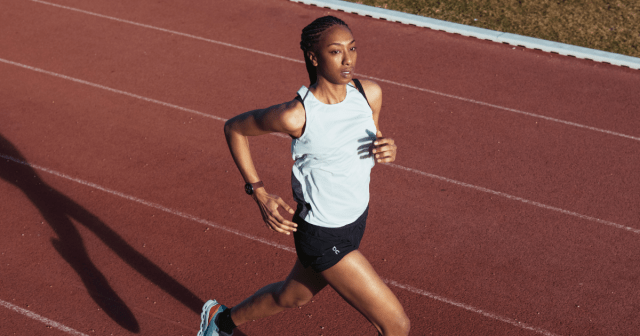Just because the temperature drops doesn’t mean you have to stop running – just means you need proper winter running gear. While getting motivated to run in the cold can be a different challenge, the truth is that by gearing up you can run just as easily during the winter as any of the other seasons of the year.
To do so, you’ll need to figure out how to layer your clothing correctly and make smart gear choices. Instead of learning what and what not to do through trial and error, use this basic guide to choose your winter running gear wisely – to stay warm and comfortable running in just about any weather condition that comes your way this winter.
Why You Need to Layer
The key to running outdoors during the winter is layering. This will allow you to unzip or remove clothing as needed to control your body temperature when you start to heat up. Layering when it’s really cold will also actually keep you warmer than a heavy jacket, trapping heat in between the layers while also wicking away sweat from your skin.
For this reason, you should always do a quick test before you head out for your workout.
Unfortunately, layering correctly can still be difficult to manage. Other factors like humidity, wind, rain, and even snow can make it difficult to determine the number and thickness of your layers, and if you get it wrong you can end up overheating or shivering as you trot home.
One way to determine if you’ve layered correctly is to stand outside for five minutes before your run to stretch and get your GPS watch ready to go. If you’re comfortable, you’ve probably overdressed. If, on the other hand, your slightly chilled and want to get moving, you’ve probably got it right.
Since your body temperature will rise during your run, dressing like it’s 20°F (ca. 11°C) warmer than the temperature is usually the sweet spot. Just be sure to consider whether or not it’s going to rain or snow, as keeping dry in cold temperatures is essential to preventing a disastrous scenario like hypothermia.
Also keep in mind that if your run is shorter at a higher intensity (like a quick interval session for instance), you won’t need as much heavy clothing. Longer runs at slower temperatures are harder to get right, and will require several layers for you to adjust your internal temperature as needed.
What to Wear in Moderately Cold Conditions
Layering too much can cause overheating, leaving you sweaty and uncomfortable for the duration of your run. This, however, doesn’t mean you should head out in shorts and t-shirt.
Creating a log will help you dial in clothing choices for future runs.
The key is to adjust the thickness of your layers and experiment over time to see what works for you. When you get home after each run, jot down a quick note in your running journal whether you were warm, cold, or just right, along with the length of your run and the temperature.
While you’re experimenting, this head-to-toe guide for those cold runs when the temperatures haven’t dipped down below the freezing point just yet should help.
headband
This will keep your ears warm but leave the top of your head uncovered, allowing more heat to be released.
thin base layer
A short-sleeve, thin layer should be all you need to keep your skin dry during longer runs. If you don’t tolerate the cold well, opt for a long sleeve base layer.
Zippered jacket
A running jacket that can be vented by unzipping sections will help you adjust your temperature as needed. Pockets will also help you store hats or gloves if your temperature rises to a level that is uncomfortable. Consider a water-resistant rain shell if there’s any chance of precipitation.
Wind-resistant gloves
Since your extremities can be difficult to keep warm, you’ll want to wear gloves even when the temperatures are above freezing.
Wind-resistant tights
While you won’t need to opt for the thickest running tights, but wind-resistant tights will protect you from the wind and cold. Lightweight running pants are also an option.
Moisture-wicking socks
Keeping your feet dry is a must. Compression socks are a good option that adjust well to your body temperature.
Trail shoes
In this temperature range, you might not need full-on winter running shoes. However, you’ll still want to avoid running shoes with lots of mesh so trail shoes are usually a suitable option.
What to Wear When It’s Really Cold – Below 0°C Or 32°F
In extreme cold, you’ll need to use more layers and consider your winter running gear choices more carefully. The head-to-toe dressing guide below will help you find the balance between staying warm and overheating, and provide you some of our top winter running gear recommendations.
Running beanie
This will help keep heat from escaping and keep you much warmer than a headband. We like this one if you’re looking for an inexpensive option.
Neck warmer
If your jacket doesn’t provide neck coverage, you can use a neck warmer to protect your skin and trap your body heat. This can be stored in your jacket easily if needed.
Base layer
You can opt for a light or mid-weight base layer. Make sure it’s moisture wicking and comfortable against the skin.
Mid layer
A long-sleeve mid layer is recommended. How heavy this layer is will depend on how cold the temperatures are and the intensity of your run. Merino wool is often a favorite among endurance athletes for its natural ability to breath and adjust to body temperature.
Shell
A running jacket with pockets that also protect you from rain or snow will usually be needed. Zippers along the back, arms, and sides of the jacket can help you control your temperature.
Running gloves
You can choose between a thicker pair for cold weather or double up with a liner and a mid-weight glove.
Tights
Thicker, cold-weather running tights or pants are usually needed. For really cold days, you can wear moisture-wicking compression tights underneath a mid-weight running pant with vents.
Knee-length socks
Socks that are moisture wicking while still providing some extra warmth are essential. Be careful doubling up on socks, as it can affect the fit of your shoe.
Cold-weather running shoes
These will keep your feet much drier and warmer than any regular running or trail shoe. This running shoe is built for winter running and is waterproof.
Last, but not least: Don’t let the cold stop you from tracking your runs! Use the Polar H10 chest strap to get the most accurate heart rate data or a running watch with optical heart rate measurement (or better yet, use the chest strap and watch). Check out running watch options in the Polar Gift Guide below.
If you liked this post, don’t forget to share so that others can find it, too.
Please note that the information provided in the Polar Blog articles cannot replace individual advice from health professionals. Please consult your physician before starting a new fitness program.





